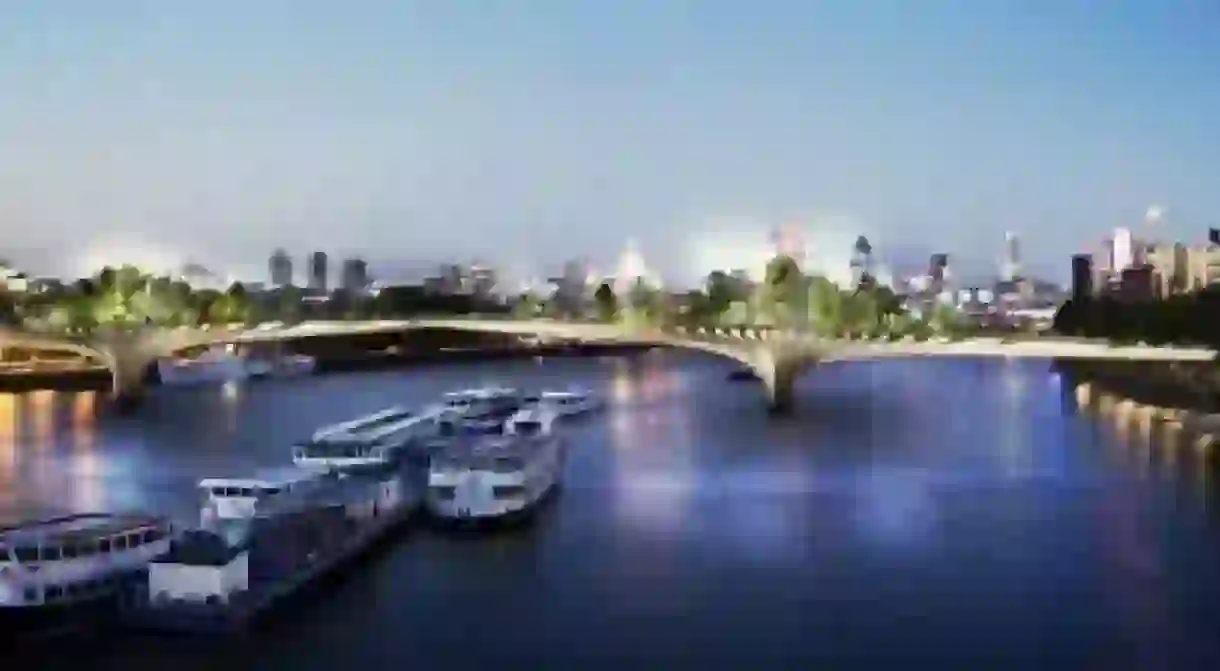Thomas Heatherwick: The Da Vinci Of Our Times?

Architect and designer Thomas Heatherwick has been named many things; The Green Man, a real world Willy Wonka or Wizard of Oz, but perhaps most famously (and controversially) by Sir Terence Conran as a ‘Leonardo da Vinci of our times.’

From setting up Heatherwick Studio in 1994 to being awarded a CBE in 2013, Thomas Heatherwick has gone from strength to strength in his design practice. Today his studio employs a team of around 110 architects, designers and makers who work from a combined studio and workshop in Kings Cross, London. A recent BBC documentary ‘The Culture Show: The Unstoppable Thomas Heatherwick’, took a closer look at the design processes behind the ‘ideas machine’ that is Heatherwick himself.

At the heart of the studio’s work is an unfailing commitment to finding design solutions that push the boundaries of materials, creating new possibilities that provoke widespread disbelief. When looking at his designs, it is entirely understandable why he has been described as ‘a magician, making the impossible, possible’. Heatherwick’s approach to the design process is experimental, inquisitive and playful; he explores the limits of materials, structures and processes to come up with his designs. Much of his designs appear biomorphic in shape, indeed one can see evidence of nature in a lot of his work, from the UK Pavilion at the Shanghai Expo, which looked like a giant burr, to the top-secret design for the Olympic Cauldron for the 2012 London Olympics.
Heatherwick Studio is therefore becoming known for its expertise in realising unusual, grand-scale projects. Thomas Heatherwick’s design for the Olympic Cauldron at the London Olympics is, perhaps, is most visible design project to date. Made up of as many ‘petals’ as there were countries (204), Heatherwick’s Olympic Cauldron symbolised the coming together of different nations. Following the London 2012 Olympic Games, each of the petals was sent to one of the competing nations, and in return they each responded with a photograph of their petal. This latter detail was a personal request from Heatherwick, once more showing his love of public interaction with design.

As aforementioned, nature provides a key source of inspiration for Heatherwick’s designs, something which was clear in the designing of the Olympic Cauldron with its petal shapes and stems. It is also evident in the design for the UK Pavilion at the Shanghai World Expo 2010. Given that the brief stated that the UK Pavilion must be in the ‘top 5’ attractions at the Expo, Heatherwick Studio had to think creatively, avoiding all British stereotypes. Taking their cue from the Expo’s theme of ‘better cities, better life’, Heatherwick’s design team wanted to represent the inventiveness and creativity be found in contemporary British life.

This led the team to look at the relationships between cities and nature, and the significance of plants; that is the development of medicine, agriculture, economic success and how this in turn affected social change. Looking like a giant seed itself, the UK Pavilion, or The Seed Cathedral, is a cube 15 metres by 10 metres that is covered in 60,000 clear acrylic rods that are each 7.5 metres long, with 250,000 seeds cast at the tip of each rod. The UK Pavilion used the humble seed as both a source of inspiration for the overall shape and texture of the Pavilion as well as a symbol for potential and promise.

Since the Shanghai Expo in 2010, Thomas Heatherwick has not been far from the news with his extraordinary designs; indeed following the success of the Olympic Cauldron there was an exhibition at the Victoria and Albert Museum displaying some of his greatest achievements, including his redesign for the iconic London Routemaster buses. The original Routemaster ceased production in 1968; since then the design has become increasingly uncoordinated. Heatherwick sought to unify and improve upon the original design features, making it longer, with two staircases and a ribbon window that follows the stairs, thus increasing the light and removing the need for unpleasant strip lighting.

Heatherwick Studio has also been instrumental in the design for a new bridge in London to link Covent Garden to the South Bank, completing the unresolved curve that begins with Waterloo Bridge. No ordinary bridge, the idea is to create a pedestrian ‘garden walkway’, including flowerbeds, trees and viewing stations. Heatherwick stated that ‘the idea is simple; to connect north and south London with a garden. We have been working with actor and campaigner Joanna Lumley, who has been a proponent of such an idea for several years.’ Indeed although the proposal for a bridge was tendered by Transport for London to improve pedestrian links across the river, Lumley has been one of the driving forces behind Heatherwick Studio and the design process. Inspired by London’s rich horticultural heritage with its large green spaces, parks, allotments, heathlands and community gardens, the bridge will look to incorporate a number of London-indigenous river-edge plant species. The 350 metre long bridge will be no mean feat of engineering; the structure will have to support the weight of fully matured trees as well as the correct quantities of soil to support them over its entire span.
With an estimated cost of upwards of £100 million pounds, it is hoped that the financing of the bridge will not impose a tax on Londoners, rather it will be paid for by private donors. Whilst Heatherwick Studio still has a long way to go, the ‘Heatherwick Currency’ as it has been described, is riding high in the capital. Arguably bolstered by his involvement in the London 2012 Olympic Games, Thomas Heatherwick and his studio continue on their meteoric rise. Supported by a mood of collective optimism for big ideas and community projects the Garden Bridge, whilst potentially a huge headache to actually engineer, looks to embody all that is great about London.














